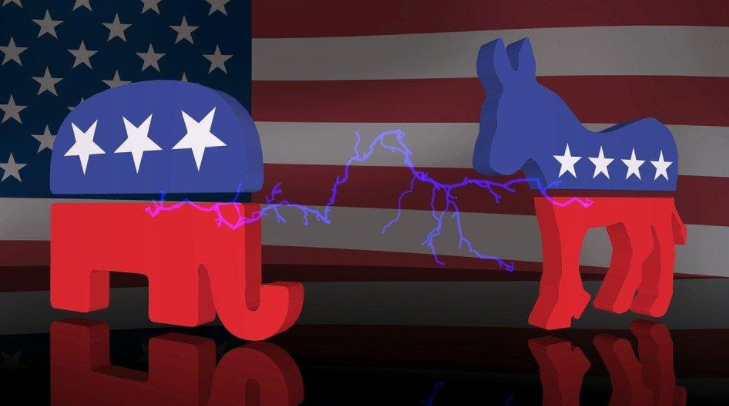
Debates
Although the pandemic has stolen the limelight from the 2020 US Presidential Election, the 3rd of November is fast approaching and, with less than a month left, opinions are divided about who will enter the White House this autumn. The first presidential debate between Donald Trump, as the Republican candidate, and Joe Biden, as the representative of the Democratic Party, has made headlines around the world; not necessarily because of their policies but because of the continuous interruptions, invectives, and finger-pointing that have presided over the debate.
Whilst the vice-presidential debate between Mike Pence and Kamala Harris was more tempered, the same attitudes prevailed; with each side accusing the other of incompetence and untruthfulness. The second presidential debate was due to take place on the 15th of October, it was cancelled because Donald Trump contracted COVID-19 and needed hospitalisation, but also because he refused to take part in a debate remotely. This unexpected turn of events coupled with his public show of disregard towards the risks posed by the virus attracted a lot of critics, but his quick recovery might have prevented him from losing much support. The third and last presidential debate on the 23rd of October will be the last chance for the candidates to convince the public that they deserve their vote.
First presidential debate 2020: https://www.youtube.com/watch?v=w3KxBME7DpM
Vice Presidential debate 2020: https://www.youtube.com/watch?v=t_G0ia3JOVs&t=2888s
Comparison of Policies
Below you can find a brief overview of the main policies that comprise the platforms on which both candidates are running. Whilst Donald Trump plans on continuing with some of the policies he proposed four years ago, Joe Biden intends on reversing them, but healthcare and the recovery of the economy are the ones receiving most scrutiny.
Donald Trump
– Economic recovery after COVID-19
– Impose tariffs on foreign products, especially those coming from China
– Less involvement in international organisations (WHO, NATO)
– Reduce immigration
– End the Affordable Care Act and decrease the cost of drugs
– Concentrate on US energy
– Trace police misbehaviour
– Defend the Second Amendment (and the right to bear arms)
Joe Biden
– Test and Trace program to combat COVID-19
– Increase minimum wage and help the recovery of the economy after the pandemic
– Re-enter international coalitions and restore relationship with China
– Undo Trump’s immigration policies
– Expand Obamacare
– Re-join the Paris Climate Accord and invest in green energy
– Criminal justice reform and support for minority groups
– Invest in free education
The US Voting System Explained
In America, the voting system consists of two important parts: the popular vote and the electoral college. Whilst the popular vote represents the overall number of people that have supported a particular candidate, the electoral college shows how much support a candidate has received in a particular state. One can win the popular vote but lose the election because they have failed to secure the electoral vote.
The Electoral College In total, there are 538 electors, representing the total voting membership of the US Congress: 435 representatives, 100 senators and 3 electors from the District of Columbia.

Each state receives a number of electors based on population, which is why states such as Texas have 38 electors, whilst Alaska has only 3. Therefore, it is more important to win certain states than others, as it can massively tip the balance in one candidate’s favour.

A candidate has to secure 270 electoral votes in order to win the presidential election, regardless of whether they win the popular vote. In the 2016 US Presidential Election, Hillary Clinton secured 48% of the popular vote, 2% more than Donal Trump, but only 227 electoral votes, 77 less than Trump.
Voting Trends and Statistics 2020

At the time of publication most polls show Joe Biden in the lead, with 54% in the popular vote, in comparison to Trump, who remains at 42%. The same statistics seem to be present in the case of the electoral college. However, it is important to bear in mind that these statistics do not predict the future, but rather attempt to make assumptions based on current trends and opinions. Moreover, the surveys that are conducted to gather data about political choices are not always representative, often showing a systemic bias towards the Democratic Party. This year, the pandemic has brought added uncertainty; as many supporters of the Democratic Party have opted to vote by post, whilst most Republicans have refused to do so for fear of electoral fraud. Therefore, it is likely that they will be voting in person on the 3rd of November, shifting the results in Trump’s favour. Also, there are some key states, Texas and Florida especially, in which the amount of support for both candidates is too close to make a prediction, but which could potentially decide who wins the election. The next presidential debate has the potential of shifting these statistics, but we will have to wait and see.
Written by Diana Jalea



Average Rating